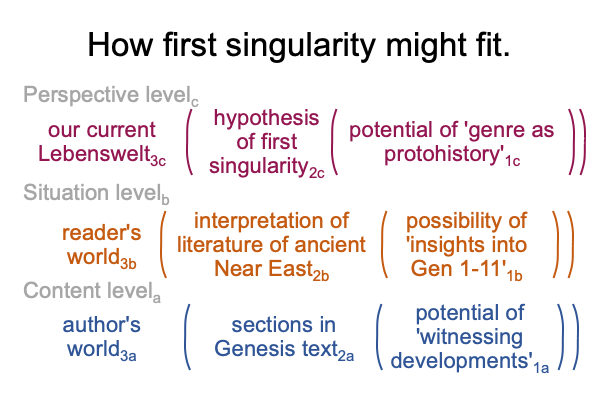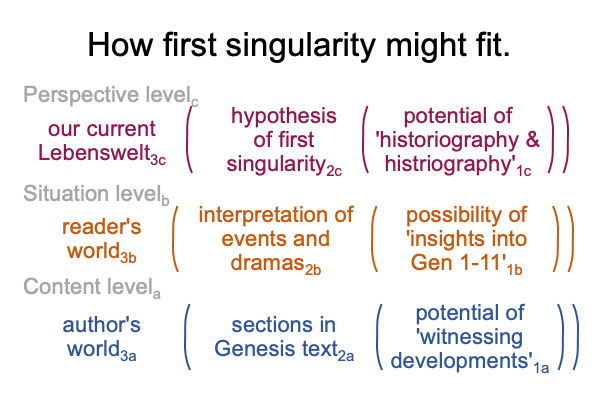Looking at the Book (2015) Genesis: History, Fiction or Neither? (Part 23 of 38)
0080 The appearance of the Ubaid of southern Mesopotamia marks the start of the first singularity. Development towards unconstrained social complexity begins immediately, and imperceptibly, like gravity moving water in a river. The narratives in Gen 2.4-11:9 describe eddies and whirlpools, events in the flow of time.
0081 Wenham argues that the term, “myth”, is not appropriate. I use the term, “fairy tales”. Why? Mothers tell their children fairy tales.
The Creation Story is told from father to child. It is referenced later in the Pentateuch. Moses codifies the seventh day as a day of rest.
In contrast, the stories of Adam and Eve are told from mother to child. They are not put into writing until the Pentateuch is woven together into a coherent whole. Indeed, vivid reminders of the Adam and Eve are found in the New Testament, not the Old Testament.
0082 What does this imply?
The stories of Adam and Eve belong to the genre of fairy tale. Once routinized, fairy tales may remain stable for thousands of years. These early stories are like ancient zircons intercalated into recent sedimentary rock.
With the hypothesis of the first singularity, inquiry turns completely around, just as in geology, where zircons offer clues to environments far earlier than the rocks in which they are embedded. The stories of Adam and Eve offer fairy-tale clues to the start of our current Lebenswelt.


